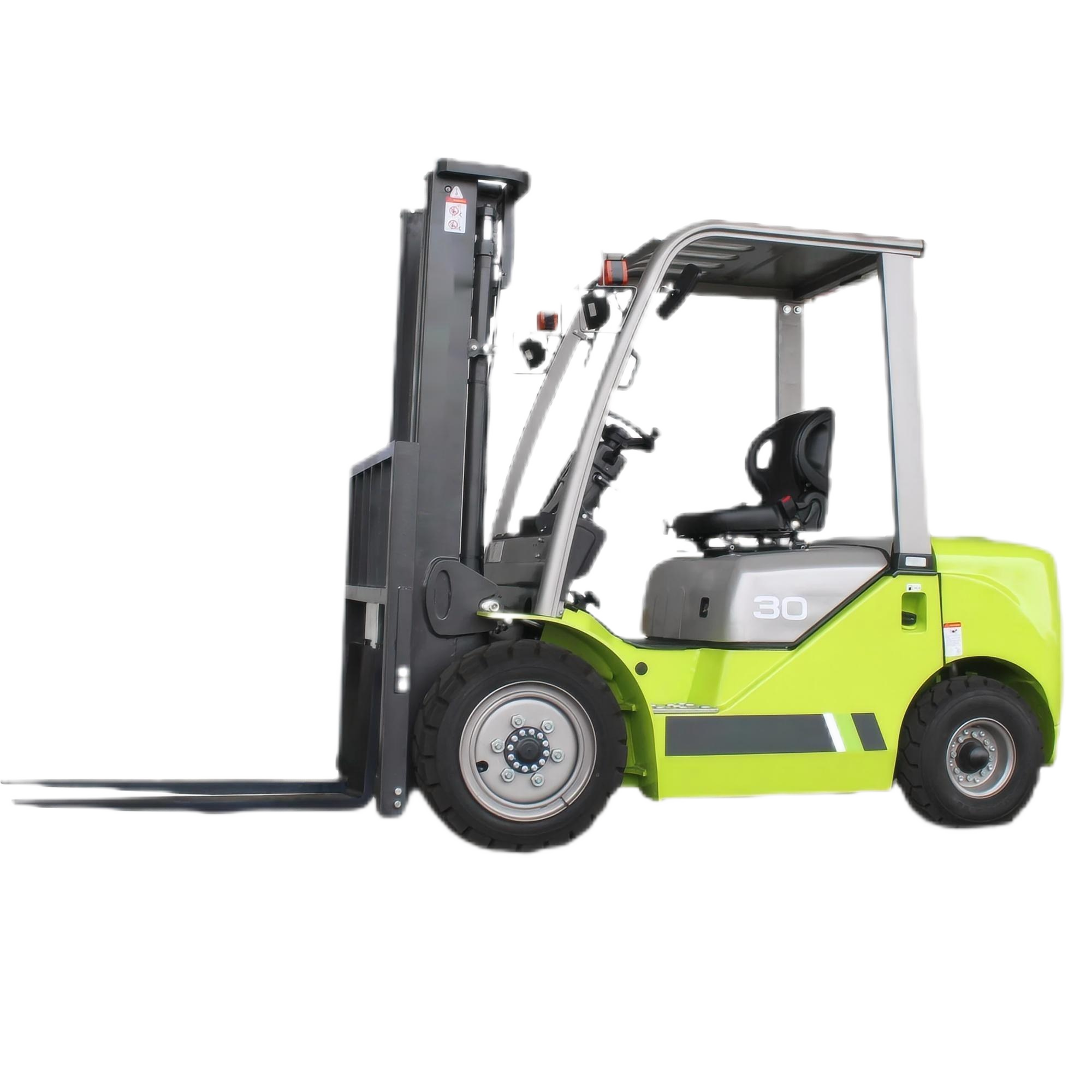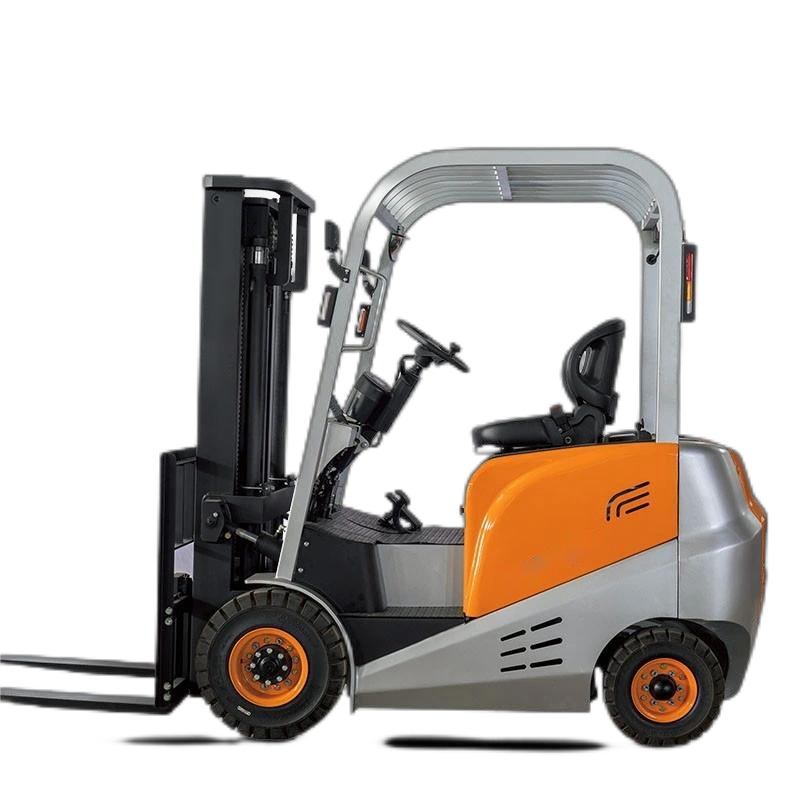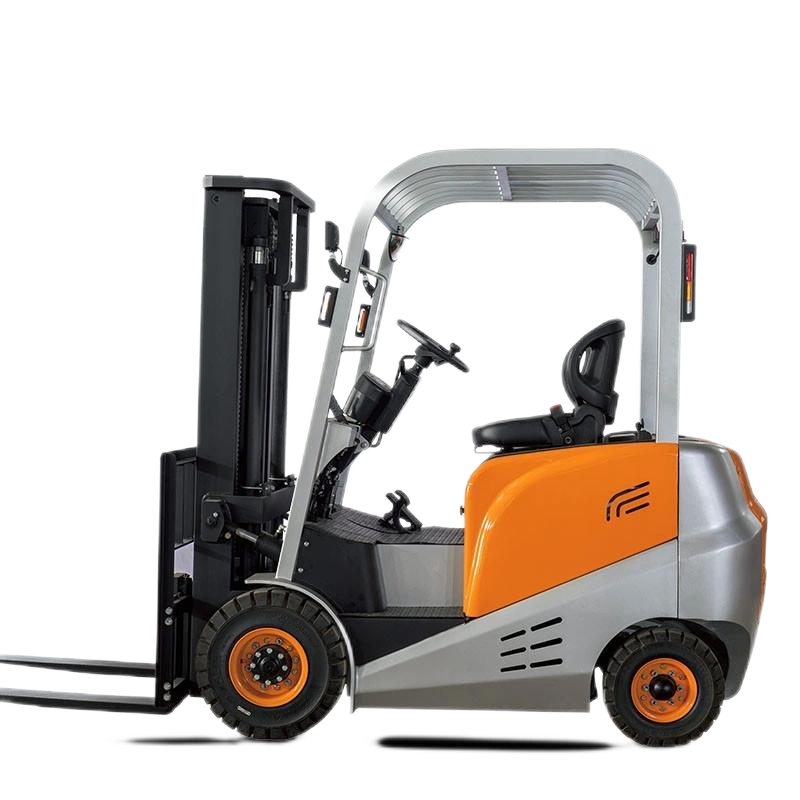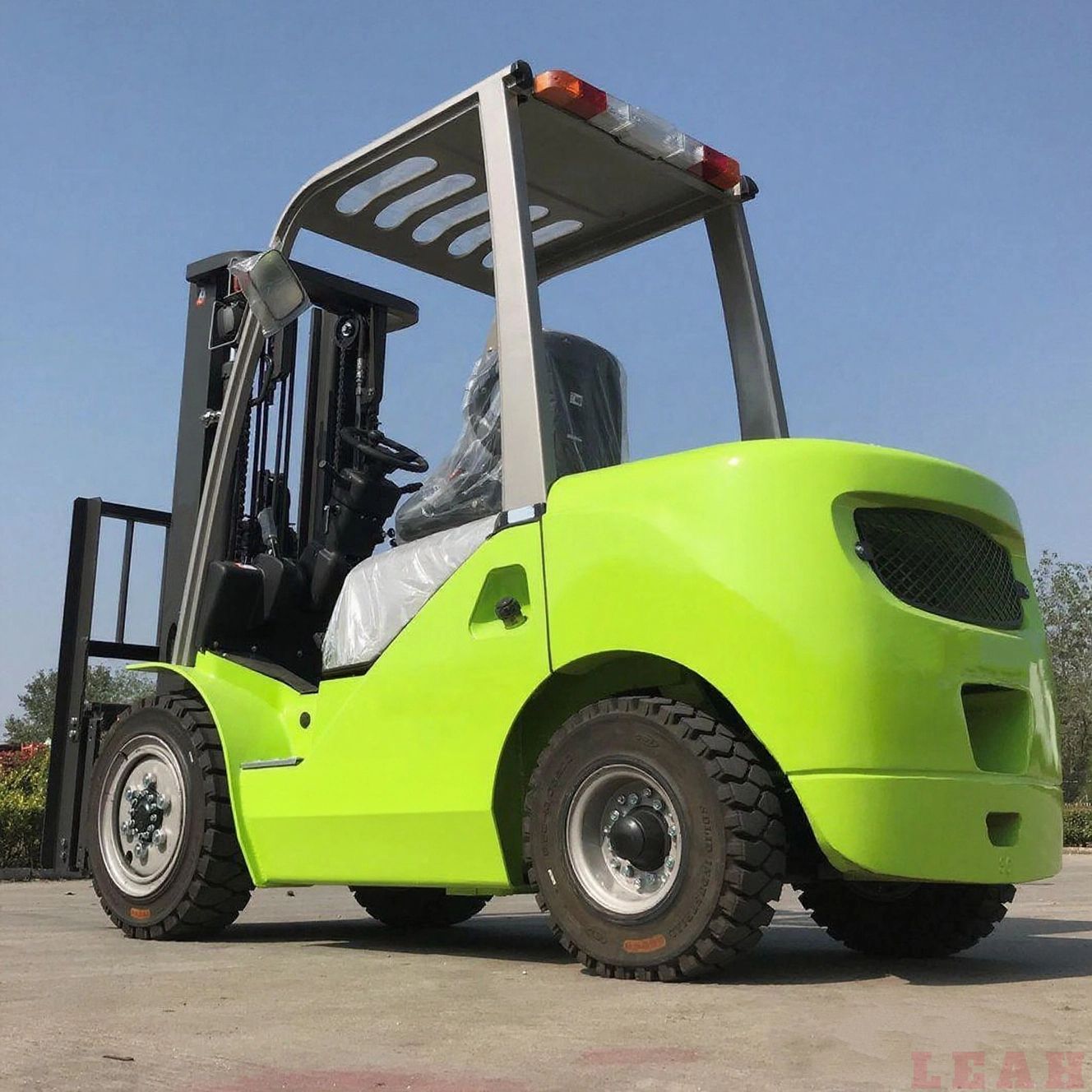Electric forklifts are widely used in warehouses, factories, and logistics centers due to their low noise, zero emissions, and high efficiency. However, their operation involves risks such as collisions, tip-overs, and electrical hazards. Ensuring electric forklift safety requires strict adherence to operating procedures, regular equipment maintenance, and comprehensive personnel training. Below is a detailed breakdown of key safety measures, categorized by core aspects.
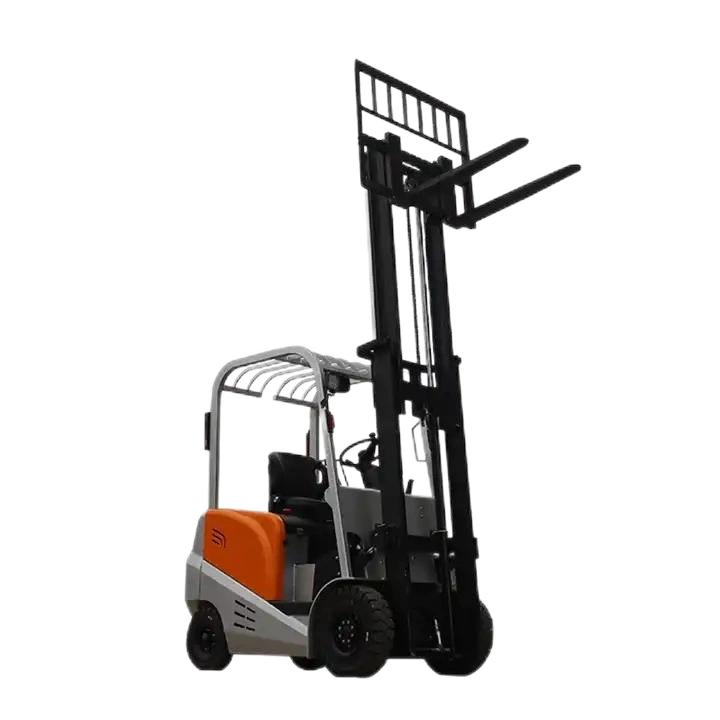
1. Pre-Operation Safety: Inspection & Preparation
A thorough pre-use check is critical to identifying potential hazards before the forklift is put into operation. Operators must complete this inspection every shift and document any issues (do not use faulty equipment).
1.1 Equipment Inspection Checklist
| Inspection Category | Key Checkpoints | Safety Purpose |
|---|---|---|
| Electrical System | - Battery: Check charge level (via gauge), terminal connections (tight, no corrosion), and electrolyte level (for lead-acid batteries, keep above plates). - Cables: Inspect for fraying, cracks, or exposed wires. - Charging Port: Ensure it is clean, dry, and free of debris. | Prevent battery leaks, short circuits, or unexpected power loss during operation. |
| Mechanical System | - Brakes: Test service brakes (stop smoothly without pulling) and parking brakes (hold the forklift on a slight incline). - Steering: Check for looseness, unusual noises, or delayed response. - Tires: Inspect for wear, cracks, or flat spots; ensure proper inflation (for pneumatic tires). - Lift Mechanism: Test forks (no bending/cracks), chains (tight, lubricated), and hydraulic hoses (no leaks). | Avoid loss of control, tip-overs, or load drops. |
| Safety Devices | - Horn: Ensure it is loud and functional. - Lights: Check headlights, taillights, and turn signals (critical for low-visibility areas). - Backup Alarm: Verify it activates when reversing. - Seatbelt: Inspect for fraying; confirm the buckle latches securely. | Alert pedestrians/other operators, improve visibility, and protect the operator in case of tip-overs. |
1.2 Operator Preparation
- Authorization: Only trained and certified operators are allowed to use electric forklifts. Unauthorized personnel (e.g., warehouse staff, visitors) must never operate or ride on the forklift.
- Personal Protective Equipment (PPE): Wear mandatory PPE, including:
- Steel-toe safety shoes (prevent foot injuries from falling loads or forklift movement).
- High-visibility vest (improve visibility to pedestrians).
- Safety glasses (protect against flying debris, e.g., when handling pallets).
- Gloves (optional, for gripping loads or operating controls).
- Environment Check: Assess the work area for hazards:
- Clear obstacles (e.g., boxes, wires) from travel paths.
- Check for wet/slippery floors (increase risk of skidding).
- Confirm overhead clearance (avoid collisions with pipes, shelves).
2. In-Operation Safety: Key Rules & Best Practices
During operation, operators must prioritize stability, visibility, and respect for pedestrians. Even small mistakes (e.g., sudden turns) can lead to tip-overs or collisions.
2.1 Load Handling: Prevent Overloading & Drops
- Know the Capacity: Never exceed the forklift’s rated load capacity (displayed on the data plate). Overloading is the top cause of tip-overs.
- Example: A 5,000-lb capacity electric forklift cannot lift a 6,000-lb load—even if the load “feels light.”
- Proper Load Positioning:
- Center the load on the forks (avoid uneven weight distribution).
- Tilt the mast slightly backward (to secure the load) when lifting or traveling.
- Keep the load as low as possible during travel (reduces instability; maximum 6–8 inches off the ground for flat surfaces).
- Avoid Hazardous Maneuvers:
- Do not lift/lower loads while turning.
- Never use the forks to push/pull other equipment (e.g., pallets, carts) unless approved.
- Do not carry passengers on the forks or in the operator’s seat (except for trained spotters, in rare cases).
2.2 Travel Safety: Control Speed & Visibility
- Speed Management:
- Travel at a safe speed (typically 5–10 mph in open areas, 2–3 mph in narrow aisles or near pedestrians).
- Slow down at corners, intersections, and doorways (use turn signals and honk to alert others).
- Stop completely before crossing pedestrian walkways or railroad tracks (if applicable).
- Visibility:
- Keep the operator’s view unobstructed. If the load blocks forward visibility, travel in reverse (with a spotter if needed).
- Use mirrors (if equipped) to check blind spots.
- Be extra cautious in low-light areas (e.g., storage rooms) — turn on headlights.
2.3 Pedestrian Safety: Right of Way & Communication
- Pedestrians First: Always yield to pedestrians, even if the forklift has the “right of way” (per site rules). Use the horn to alert pedestrians of your presence.
- No Distractions: Do not use mobile phones, radios, or other devices while operating the forklift. Focus solely on the task.
3. Post-Operation Safety: Parking & Maintenance
Proper shutdown and maintenance ensure the forklift remains safe for the next operator and extends its lifespan.
3.1 Safe Parking Procedures
- Park the forklift in a designated area (away from fire exits, emergency routes, or high-traffic zones).
- Lower the forks completely to the ground (do not leave them elevated).
- Apply the parking brake firmly.
- Turn off the ignition and remove the key (prevent unauthorized use).
- If parking on an incline (only if unavoidable):
- Chock the wheels (use wheel blocks) to prevent rolling.
- Tilt the mast forward slightly (to secure the forks against the ground).
3.2 Battery Charging & Maintenance Safety
Electric forklift batteries pose unique risks (e.g., acid spills, gas emissions), so charging must follow strict protocols:
- Charging Area Requirements:
- Use a well-ventilated area (lead-acid batteries release hydrogen gas during charging, which is flammable).
- Keep fire extinguishers (Class ABC or water-based) nearby (never use CO₂ extinguishers on battery fires).
- Avoid smoking or open flames near charging stations.
- Battery Handling:
- Wear acid-resistant gloves, goggles, and an apron when handling batteries (to protect against sulfuric acid spills).
- Use a properly rated battery lift (not the forklift itself) to remove/replace batteries.
- Do not overcharge the battery (follow the manufacturer’s time guidelines; overcharging shortens lifespan and risks overheating).
- Spill Response:
- If acid spills, neutralize it with baking soda (do not use water directly—water spreads acid).
- Clean up spills immediately and report the incident.
4. Emergency Response: What to Do in Accidents
Even with precautions, accidents (e.g., tip-overs, collisions) can occur. Knowing how to respond can minimize injuries and damage.
4.1 Tip-Over Response
- Stay Calm: Do NOT jump out of the operator’s seat (this is the leading cause of operator injuries in tip-overs).
- Brace Yourself: Grab the steering wheel or overhead guard with both hands, and keep your feet firmly on the floor.
- Lean Away from the Tip: If the forklift tips to the side, lean toward the opposite direction (e.g., if tipping left, lean right) to avoid being crushed by the overhead guard.
- Shut Down After Stabilization: Once the forklift stops moving, turn off the ignition, remove the key, and exit carefully.
4.2 Collision or Load Drop Response
- Check for injuries: Assist any injured personnel and call emergency services (e.g., 911) if needed.
- Secure the area: Block off the accident zone to prevent additional hazards.
- Report the incident: Notify a supervisor immediately and document details (time, location, cause, damage).
- Do not operate the forklift: If the forklift is damaged, wait for a qualified technician to inspect it.
5. Ongoing Safety: Training & Audits
Safety is not a one-time task—it requires continuous effort:
- Regular Training: Refresh operator training annually (or after an accident). Training should cover:
- New equipment features (e.g., advanced safety systems).
- Updated site rules (e.g., new pedestrian zones).
- Emergency response drills.
- Equipment Audits: Conduct monthly/quarterly inspections by qualified technicians (beyond daily operator checks) to address hidden issues (e.g., worn hydraulic seals, faulty electrical components).
- Safety Culture: Encourage operators to report hazards or near-misses (without penalty) to improve overall safety.
By following these measures, organizations can significantly reduce the risk of electric forklift accidents, protecting both operators and pedestrians while maintaining operational efficiency. Remember: safety is everyone’s responsibility—from the operator to the warehouse supervisor.





